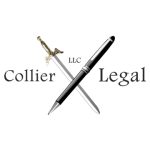Utility Patents
Utility patents are patents that protect the functionality of an invention. They are a type of nonprovisional patent, which means they are examined and can issue into granted patents.
Utility patents may claim priority to an earlier filed provisional patent, and may become international patents. However, utility patents are different from design patents, which are covered separately.

What Are The Requirements To File A Utility Patent?
These nonprovisional patent applications require submission of several documents for proper filing, including:
- Specification
- Abstract
- Claims
- Drawings
- Inventor’s Oath or Declaration
- Filing Fee
- Application Data Sheet (ADS)
- Information Disclosure Statement (IDS)
- (Biological Only) DNA Sequencing Lists or Chemical Compound List
How Long Do Utility Applications Take?
Utility nonprovisional applications are set to publish 18 months after filing. The average time for a nonprovisional to issue is 2 years. However, it may take longer depending on how backlogged the respective USPTO art unit is and how many office action responses are necessary.
There are ways to accelerate examination of an application. Accelerated examination can be requested for payment of a fee (about $2,000 for micro entities) or based on specific factors such as age or special subject matter (e.g. environmental or national defense). Another option is to pay a small fee (~$150) and submit an extremely thorough patent search along with supporting materials. This option may cost nearly the same as accelerated examination for the large fee, but can be cost-effective and efficient when combined with a preliminary patent search. You can have a patent attorney perform an initial patentability search in a way that would lead to an accelerated examination search. If your invention is patentable, you will be ready to file for accelerated examination.
Our Experience With Utility Patents
Our patent attorneys are constantly working on preparing and prosecuting utility applications. This is the core of our legal practice. Our patent lawyers work on a variety of subject matters, including biotechnology patents, chemical patents, hardware patents, and mechanical and electronic device patents. Our attorneys have advanced degrees in biotechnology, so they have the technical understanding to draft and prosecute biological science patents as well as technology and device patents.
What Sets Us Apart
Awards
Recognized in Best Lawyers: Ones to Watch in America for Patent Litigation.
Reviews
5.0★ Google Rating Across All Locations
Clients consistently rate us 5 stars for responsiveness, clarity, and strategic insight.
Testimonials
“Joe was phenomenal to work with. As a first-time inventor navigating the patent process, I couldn’t have asked for better support. He was fast, efficient, and took the time to ensure my filing not only met requirements, but maximized the value of my invention. He answered every question, offered thoughtful guidance, and delivered a polished, professional specification right on schedule. If you’re looking for someone who knows their stuff and actually gives a damn, Joe’s your guy.”
Learn More About Patents
Patent Strategies for Biologics and Molecules
Patent Strategies for Biologics and Molecules Navigation Why Patent Strategy...
How to Patent Biologics in Clinical Development
How to Patent Biologics in Clinical Development Navigation Why Biologic...
Biotechnology Intellectual Property: Strategies for Innovators
Biotechnology Intellectual Property: Strategies for Innovators Navigation Understanding Biotechnology Intellectual...
Understanding Markush Structure in Patents
Understanding Markush Structure in Patents Navigation Introduction What is a...
Schedule Your Free Consultation
Recent Articles
Patent Strategies for Biologics and Molecules
Patent Strategies for Biologics and Molecules Navigation Why Patent Strategy...
Read MoreHow to Patent Biologics in Clinical Development
How to Patent Biologics in Clinical Development Navigation Why Biologic...
Read MoreSoftware Licensing Agreements: Overview
Software Licensing Agreements: Overview Navigation What Are Equity Incentive Plans?...
Read MoreEquity Incentive Plans: Aligning Ownership and Growth
Equity Incentive Plans: Aligning Ownership and Growth Navigation What Are...
Read MoreTrademarks and the Amazon Brand Registry
Trademarks and the Amazon Brand Registry Navigation What Is the...
Read MoreMadrid Protocol For International Trademark Registration
Madrid Protocol For International Trademark Registration Navigation What is the...
Read More







